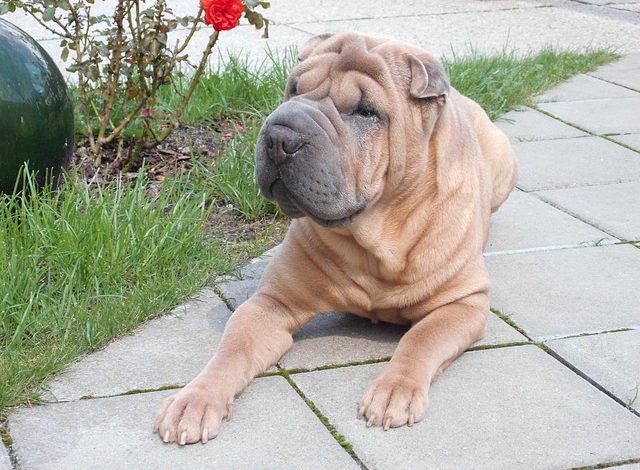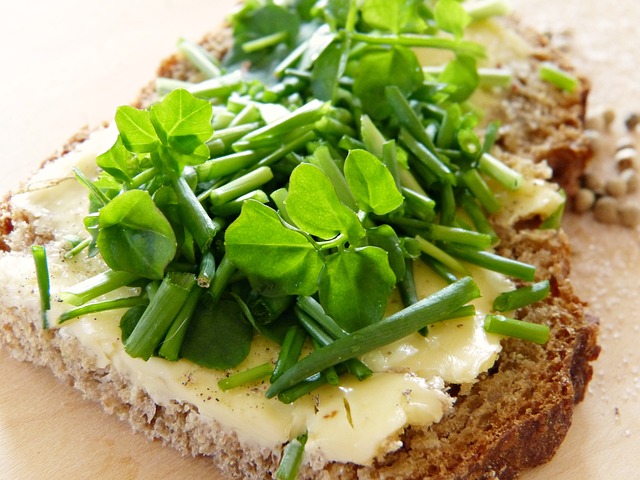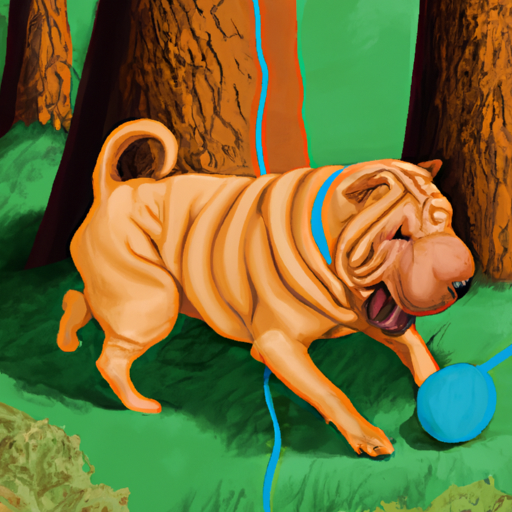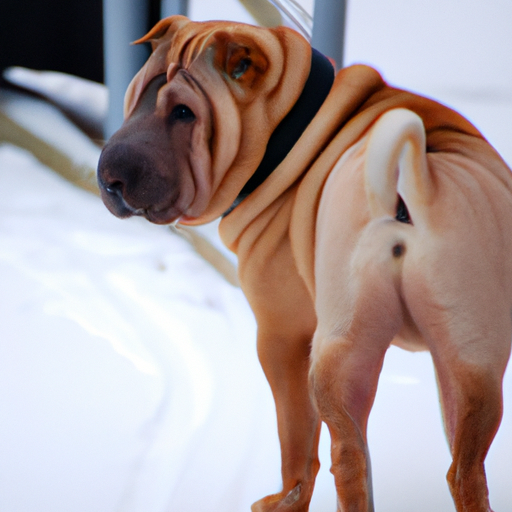Shar-Pei 101: A Beginner’s Guide to Owning this Unique Breed

Get ready to delve into the world of Shar-Pei ownership! This beginner-friendly guide will provide you with all the basics you need to know, from the breed’s intriguing origins in China, to its distinctive personality traits, grooming needs, and dietary requirements. It’s an essential read for anyone considering bringing a Shar-Pei into their home.
1. ‘Where Do Shar-Pei Come From?’: The Ancient Roots of an Unusual Breed
The Shar-Pei is a unique breed with a fascinating history that dates back over 2,000 years. Originating in China, these dogs were initially bred for various purposes, including hunting, herding, and guarding. They were highly valued for their protective nature and versatility. The exact origins of the Shar-Pei are still debated among experts, but it is believed that they share ancestry with Chow Chows, Tibetan Mastiffs, and the extinct Han Dynasty Fighting Dog.
This breed’s distinctive features, such as their loose and wrinkled skin, were developed to protect them during dog fights. The wrinkles made it difficult for opponents to grab onto their skin, giving them an advantage in combat. The name ‘Shar-Pei’ translates to ‘sand skin,’ which perfectly describes their unique coat texture.
In the 1970s, the Shar-Pei faced near-extinction due to political unrest in China. Fortunately, a small number of these dogs were brought to the United States, where dedicated breeders worked tirelessly to restore the breed’s population. Today, the Shar-Pei is a beloved and recognized breed worldwide.
Shar-Peis are known for their distinctive appearance, which includes a broad, flat head, a short muzzle, and deep-set, almond-shaped eyes. Their wrinkles are one of their most recognizable features, although not all Shar-Peis have the same amount of wrinkles. Additionally, they have a blue-black tongue, which is a trait they share with Chow Chows.
While Shar-Peis may have a fierce appearance, they are actually known to be loyal, calm, and affectionate companions. They are generally reserved with strangers but are incredibly devoted to their families. Shar-Peis are also known for their independent nature and can be somewhat stubborn, so early socialization and consistent training are essential.

1. An illustration of a Shar-Pei in traditional Chinese art, illustrating the breed’s ancient origins.
2. ‘What Makes a Shar-Pei Tick?’: Personality Traits of the Shar-Pei
The Shar-Pei is a breed with a distinct personality that sets them apart from other dog breeds. They are known for being independent, strong-willed, and sometimes stubborn. While this can present challenges in training, it also makes them unique and interesting companions.
Shar-Peis are typically loyal and protective of their families, making them excellent watchdogs. They have a natural instinct to guard and will not hesitate to alert their owners if they sense any potential threat. This protective nature can extend to their territory and belongings, so early socialization is crucial to ensure they are comfortable and well-behaved around strangers.
Despite their protective instincts, Shar-Peis can also be very affectionate with their families. They form strong bonds with their owners and enjoy spending quality time with them. However, they may not be as demonstrative with their affection compared to some other breeds. They often show their love through their loyalty and willingness to be by their owners’ side.
Shar-Peis are generally calm and composed, but they can have a stubborn streak. This means that they may require patient and consistent training to ensure they understand and follow commands. Positive reinforcement techniques, such as rewards and praise, tend to work well with this breed.
It’s important to note that Shar-Peis can be sensitive to harsh treatment or rough handling. They respond best to gentle and firm guidance. Early socialization and exposure to different people, animals, and environments are crucial for them to develop into well-rounded and confident dogs.
3. ‘To Brush or Not to Brush?’: The Grooming Needs of a Shar-Pei
The grooming needs of a Shar-Pei can vary depending on the type of coat they have. There are two main coat types in this breed: the horse coat and the brush coat. The horse coat is short, prickly, and coarse, while the brush coat is longer and softer. Regardless of the coat type, regular grooming is essential to keep their skin and coat healthy.
For the horse coat, brushing once a week is usually sufficient to remove any loose hairs and maintain its neat appearance. On the other hand, the brush coat requires more frequent brushing, ideally two to three times a week, to prevent matting and tangling. This is especially important during shedding seasons when their coat tends to shed more heavily.
In addition to regular brushing, Shar-Peis require special attention to their wrinkles. These adorable folds of skin require regular cleaning to prevent any build-up of dirt, bacteria, or moisture, which can lead to skin infections. Gently wiping the wrinkles with a damp cloth or using a mild, hypoallergenic dog wipe is recommended. It’s important to ensure that the wrinkles are completely dry after cleaning to avoid any skin irritations.
Bathing a Shar-Pei should be done on an as-needed basis to avoid stripping the coat of its natural oils. It’s best to use a gentle, dog-specific shampoo to prevent any skin dryness or irritation. After bathing, thoroughly drying their coat is crucial, especially in the wrinkles, to prevent any moisture-related skin issues.
Trimming their nails regularly is also necessary to prevent overgrowth and discomfort. Checking and cleaning their ears to remove any dirt or wax buildup is important for maintaining good ear health.

4. ‘What’s on the Menu?’: A Guide to the Shar-Pei Diet
Feeding your Shar-Pei a balanced and nutritious diet is crucial for their overall health and well-being. As a responsible owner, it is important to understand their dietary needs and provide them with appropriate food choices.
When it comes to choosing the right food for your Shar-Pei, opt for high-quality dog food that is specifically formulated for medium to large breeds. Look for options that contain real meat as the main ingredient and avoid foods that contain excessive fillers or artificial additives.
A Shar-Pei’s diet should consist of a mix of proteins, carbohydrates, and healthy fats. Protein sources like chicken, beef, fish, or lamb are essential for their muscle development and should make up a significant portion of their diet. Carbohydrates from whole grains, fruits, and vegetables provide energy and fiber.
It’s important to note that Shar-Peis can be prone to certain food allergies and sensitivities. Common allergens include grains, dairy, and certain types of protein. If you suspect your Shar-Pei has a food allergy, consult with your veterinarian to determine the best course of action and possibly switch to a hypoallergenic diet.
Portion control is key to maintaining a healthy weight for your Shar-Pei. Overfeeding can lead to obesity, which can put strain on their joints and increase the risk of other health issues. Follow the feeding guidelines provided by the food manufacturer and monitor your dog’s body condition to adjust their portion size accordingly.
Remember to provide fresh water at all times to keep your Shar-Pei hydrated. Avoid feeding them table scraps or human food as it can lead to digestive problems and unhealthy habits.
5. ‘How Much Exercise Does a Shar-Pei Need?’
Shar-Peis are a relatively low-energy breed and do not require as much exercise as some other breeds. However, they still benefit from regular physical activity to maintain their overall health and prevent boredom.
On average, a Shar-Pei should have about 30 minutes to an hour of exercise each day. This can be divided into two or three shorter walks or play sessions. Keep in mind that every dog is unique, and their exercise needs may vary based on age, health, and individual preferences.
When it comes to exercise, it’s important to strike a balance. While Shar-Peis are not overly active, they still need mental and physical stimulation to prevent them from becoming bored or developing destructive behaviors. Engage them in activities that challenge their minds, such as puzzle toys or obedience training.
While walks are great for physical exercise, it’s important to remember that Shar-Peis are brachycephalic breeds, meaning they have short muzzles. This can make them more prone to overheating and respiratory issues. Avoid exercising them during the hottest parts of the day and be mindful of their breathing and energy levels during exercise.
If you have a fenced yard, it can provide a safe space for your Shar-Pei to run around and play. However, always supervise them to ensure their safety and prevent them from escaping or getting into mischief.
Keep in mind that exercise is not just about physical activity, but also about bonding with your Shar-Pei. Use this time to strengthen your relationship and provide mental stimulation through interactive play and training.

5. An image of a Shar-Pei playing in a park, demonstrating the breed’s need for regular exercise.
6. ‘Is a Shar-Pei the Right Breed for Your Family?’
Adding a new furry member to your family is an exciting decision, but it’s important to consider whether a Shar-Pei is the right breed for your lifestyle and household. Shar-Peis are known for their independent and strong-willed nature, which may not make them the ideal choice for first-time dog owners or families with young children.
It’s crucial to understand that Shar-Peis are not naturally outgoing or overly affectionate with strangers. They can be wary of unfamiliar faces and may require proper socialization from an early age. If you have a busy household with frequent visitors or if you’re looking for a dog that will instantly warm up to everyone, a Shar-Pei may not be the best fit.
Another factor to consider is the grooming needs of a Shar-Pei. Their wrinkles require regular cleaning and maintenance to prevent infections and skin issues. Additionally, their short coats shed moderately, which may not be suitable for individuals with allergies or those who prefer a low-shedding breed.
While Shar-Peis can be loving and loyal companions, they do possess a strong sense of independence. This means they may not always be eager to please or follow commands without question. Patience, consistency, and positive reinforcement training methods are essential when training a Shar-Pei.
7. ‘A Wrinkled Journey’: Living with a Shar-Pei
Living with a Shar-Pei is a unique and rewarding experience. Those adorable wrinkles that first attracted you to the breed will become a defining characteristic of your daily life. You’ll quickly learn that those wrinkles require special attention and care to keep your Shar-Pei healthy and comfortable.
As a Shar-Pei owner, you’ll become intimately familiar with the task of cleaning and drying the folds of their skin. Regular inspection and cleaning are necessary to prevent moisture buildup and potential infections. A gentle wipe with a damp cloth or specialized dog wipes can help maintain their skin’s health and keep them smelling fresh.
Another aspect of living with a Shar-Pei is managing their exercise needs. While they may not require intense physical activity like some other breeds, regular exercise is still essential to keep them mentally stimulated and prevent them from becoming sedentary. Daily walks and playtime in a secure, fenced yard will help maintain their overall well-being.
Shar-Peis are known for their loyalty and protective nature, making them excellent watchdogs. They will alert you to any potential intruders with their deep, distinctive barks. However, it’s important to provide proper socialization to prevent them from becoming overly protective or aggressive towards strangers.
Training a Shar-Pei requires patience and consistency. Their independent nature means they may be resistant to commands at times. Positive reinforcement techniques, such as rewards and praise, work best to motivate them. Early socialization with other dogs, animals, and people is crucial to ensure they develop into well-rounded companions.
Living with a Shar-Pei also means being prepared for their health challenges. Shar-Peis are prone to certain genetic conditions, such as skin allergies, eye problems, and joint issues. Regular veterinary check-ups and a nutritious diet tailored to their needs can help mitigate these potential health concerns.

7. A day in the life of a Shar-Pei owner, capturing the joys and challenges of living with this unique breed.
Owning a Shar-Pei can be a rewarding experience, filled with loyalty, companionship, and unique adventures. By understanding their origin, personality traits, grooming, and dietary needs, you can provide the best care for your furry friend. With patience, love, and understanding, you will establish a strong bond with your Shar-Pei that will last a lifetime.





